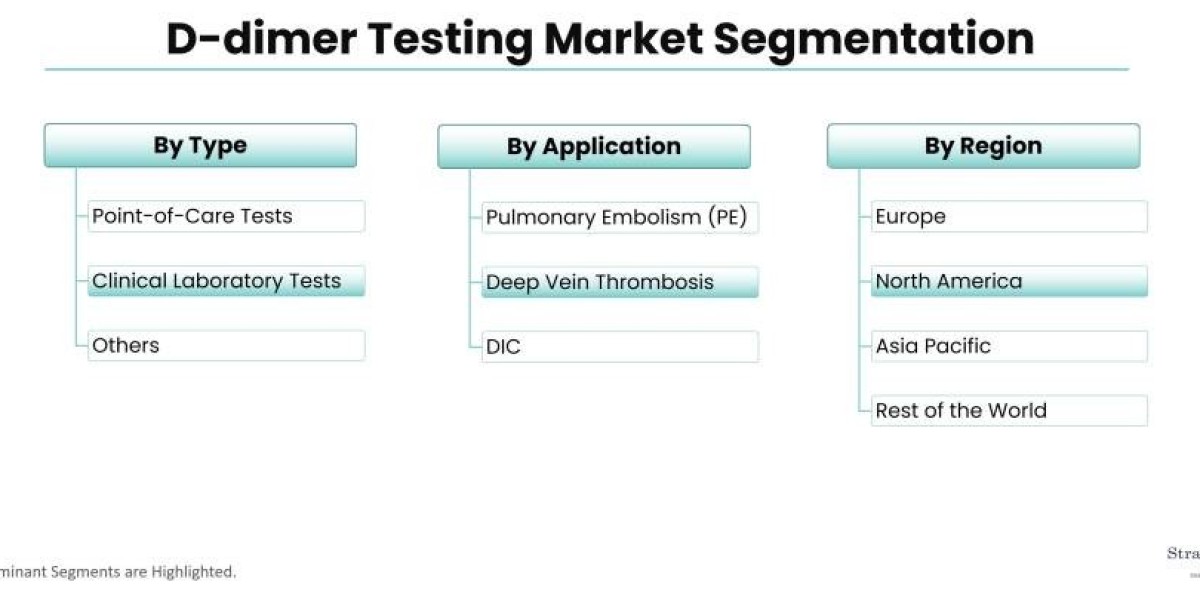Blood clotting disorders, also known as thrombophilias, are conditions characterized by abnormal blood clot formation in the circulatory system. These disorders can range from mild to life-threatening and can lead to various complications such as deep vein thrombosis (DVT), pulmonary embolism (PE), and stroke. Timely and accurate diagnosis is crucial for appropriate management and treatment. One important tool in diagnosing blood clotting disorders is D-Dimer testing. In this article, we will explore the role of D-Dimer testing and its significance in the diagnosis of these conditions. The D-dimer testing market is estimated to grow from USD 1.14 billion in 2022 to USD 1.49 billion by 2028 at a healthy CAGR of 4.60% during the forecast period.
D-Dimer is a protein fragment produced when a blood clot is broken down in the body. It is a specific marker for ongoing fibrinolysis, the natural process of clot dissolution. D-Dimer levels in the blood increase when there is increased clot formation and breakdown. Therefore, measuring D-Dimer levels can help identify the presence of blood clots in the body.
D-Dimer testing is commonly used as a screening tool for suspected cases of DVT and PE. These conditions involve the formation of blood clots in the deep veins of the legs or the lungs, respectively. When a patient presents with symptoms such as leg pain, swelling, shortness of breath, or chest pain, D-Dimer testing can aid in ruling out or confirming the presence of these potentially life-threatening conditions.
The advantage of D-Dimer testing is its high sensitivity, meaning it can effectively detect the presence of blood clots. A negative D-Dimer test result is highly indicative that a blood clot is not present, making it a valuable tool for ruling out thrombotic events. However, it is important to note that D-Dimer testing is not specific to a particular disorder and can be elevated in various other conditions, such as recent surgery, trauma, pregnancy, and certain inflammatory diseases. Therefore, a positive D-Dimer test result should be followed by further diagnostic investigations to confirm the underlying cause.
D-Dimer testing is also useful in monitoring the effectiveness of anticoagulant therapy. Anticoagulants are medications used to prevent the formation and growth of blood clots. Regular monitoring of D-Dimer levels can help assess whether the anticoagulant therapy is achieving the desired effect. If D-Dimer levels remain elevated despite treatment, it may indicate ongoing clot formation and the need for a change in the therapeutic approach.
In addition to DVT and PE, D-Dimer testing has found applications in other clotting disorders as well. It can aid in the diagnosis of disseminated intravascular coagulation (DIC), a condition characterized by widespread clotting and bleeding. D-Dimer levels are typically elevated in DIC due to the excessive clot breakdown occurring throughout the body.
Moreover, D-Dimer testing can be employed in the diagnosis of arterial thrombosis, which involves the formation of blood clots in the arteries. Arterial thrombosis can lead to serious conditions such as myocardial infarction (heart attack) and stroke. Measuring D-Dimer levels in suspected cases can help differentiate between arterial and venous clotting disorders and guide appropriate management strategies.
In conclusion, D-Dimer testing plays a significant role in the diagnosis and management of blood clotting disorders. It is a sensitive screening tool for conditions such as DVT and PE, allowing for timely intervention. Additionally, it aids in monitoring the effectiveness of anticoagulant therapy and assists in the diagnosis of other clotting disorders. However, it is important to interpret D-Dimer results in conjunction with the patient's clinical presentation and other diagnostic tests to ensure accurate diagnosis and appropriate treatment decisions.








